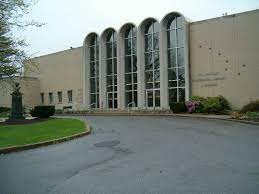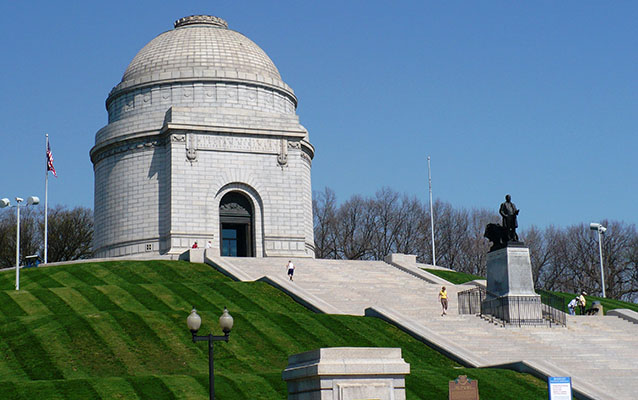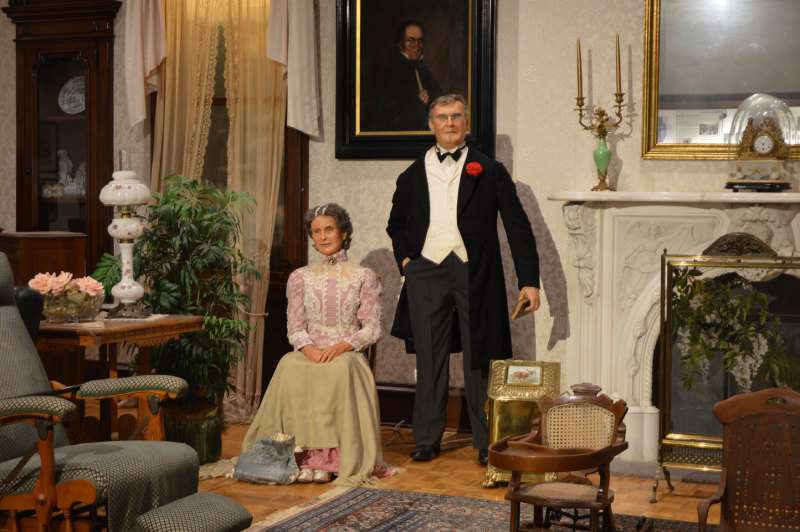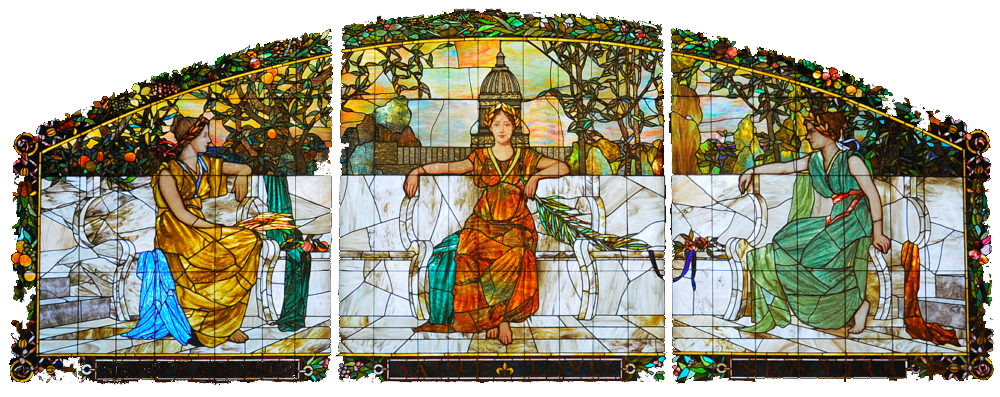Here’s what I can tell you about my recent visit to the William McKinley Presidential Library and Museum in Canton, Ohio: I didn’t visit the dinosaur exhibit, but I did see the planetarium.
I know. I didn’t connect that stuff with the twenty-fifth president of the United States, either.

Every president since Herbert Hoover has an official presidential library administered by the National Archives and Records Administration (NARA). This means that NARA currently administers fifteen presidential libraries/museums. That leaves out twenty-nine men who served as president prior to Hoover. No worries: they have presidential libraries and/or sites/museums too, each supported by a trust, foundation, society, or university. The McKinley Presidential Library and Museum is run by the Stark County Historical Society and was my first experience with a presidential museum operated outside the NARA system.
The museum sits next to the William McKinley National Memorial, a majestic domed building atop a hill. The memorial is the final resting place of McKinley, his wife Ida, and their two young daughters. Dedicated in 1907, it’s a serene place of reverence that can make the hodge-podge nature of the museum next door feel like a bit of a disconnect.

To be sure, the museum has a McKinley exhibit — it even features animatronic versions of William and Ida, happy to converse about various topics if you’ll just press the button. The figures feel like relics from a long-ago tech era. I may have pushed the button more times than necessary, weirdly fascinated by the stiffness of the figures and the way Ida’s neck creaked whenever she turned her head.
Nestled in-between the planetarium, dinosaurs, replica of a street filled with 19th-century shops, and an expansive exhibit of Stark County history, the McKinley exhibit feels a little small. I couldn’t help wondering when something that’s meant to be an honor might not be construed as one.
On the other hand, the best presidential museums provide both biographical information and historical context. I left the McKinley exhibit with greater knowledge about not only the man who served as president but the times and events that formed and compelled him.
William McKinley isn’t a president most people remember. When they do, it’s usually because he was one of four U.S. presidents assassinated in office. (He was third, shot at the height of his popularity in 1901.) McKinley tends to be overshadowed in history by the vice-president who succeeded him to become the nation’s youngest president, larger-than-life Theodore Roosevelt. But in Canton, Ohio, the city where William and Ida McKinley spent their most significant years, pride and memory are very much alive. Canton has a story it’s eager to tell.
So maybe the museum’s busy layout can be seen more as a bonus than a distraction. Maybe the Stark County Historical Society knows that in order to share a story that more recent generations may not find relevant, you need to diversify the lure.
Maybe sometimes you need a dinosaur.









My daughter is completely creeped out by animatronics! She would not be pressing any of those buttons.
On a recent epic road trip, we passed a sign bragging that the Herbert Hoover museum was “The only presidential museum in Iowa!” As the kids used to say a few years ago, “Weird flex, but OK.”
If you ever pass through my town again, maybe we’ll have to go into the Gerald R. Ford Presidential Museum.
Old presidents don’t die. They turn into libraries
Kristina, I’ve been to the Hoover presidential museum — it’s a good one, sitting in the middle of West Branch, Iowa (his birthplace) in a setting where you’d never expect to find a presidential museum. And you’re on … if I’m ever in Grand Rapids again, we have a date for the Gerald Ford presidential museum (although we’d have to go to Ann Arbor if we wanted the library part).
Erm … did I mention that I’m sort of a presidential-museum geek?
Bob — they turn into either libraries or figurines in various museums or Disney World.
So no change there, then . . . 🙂